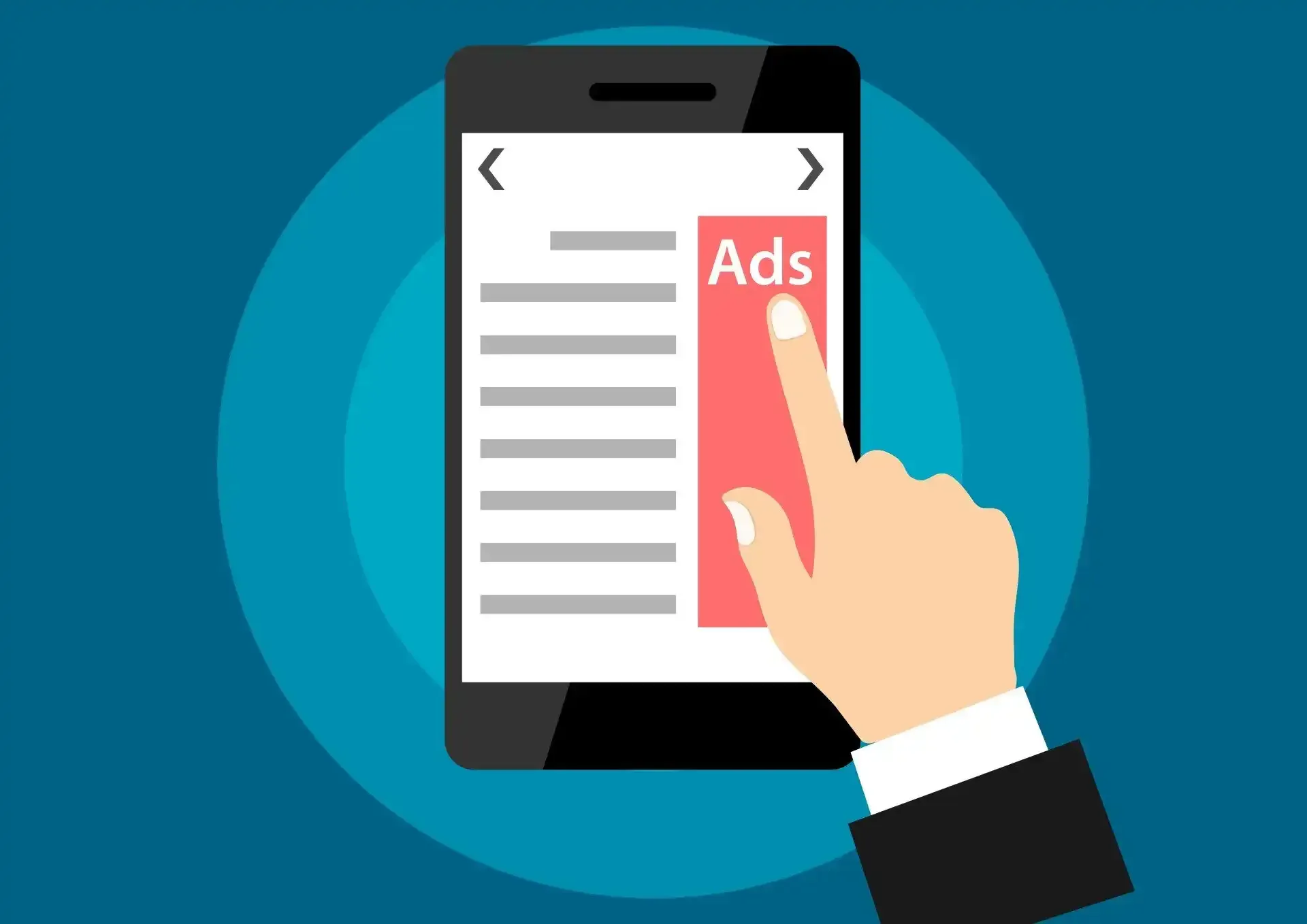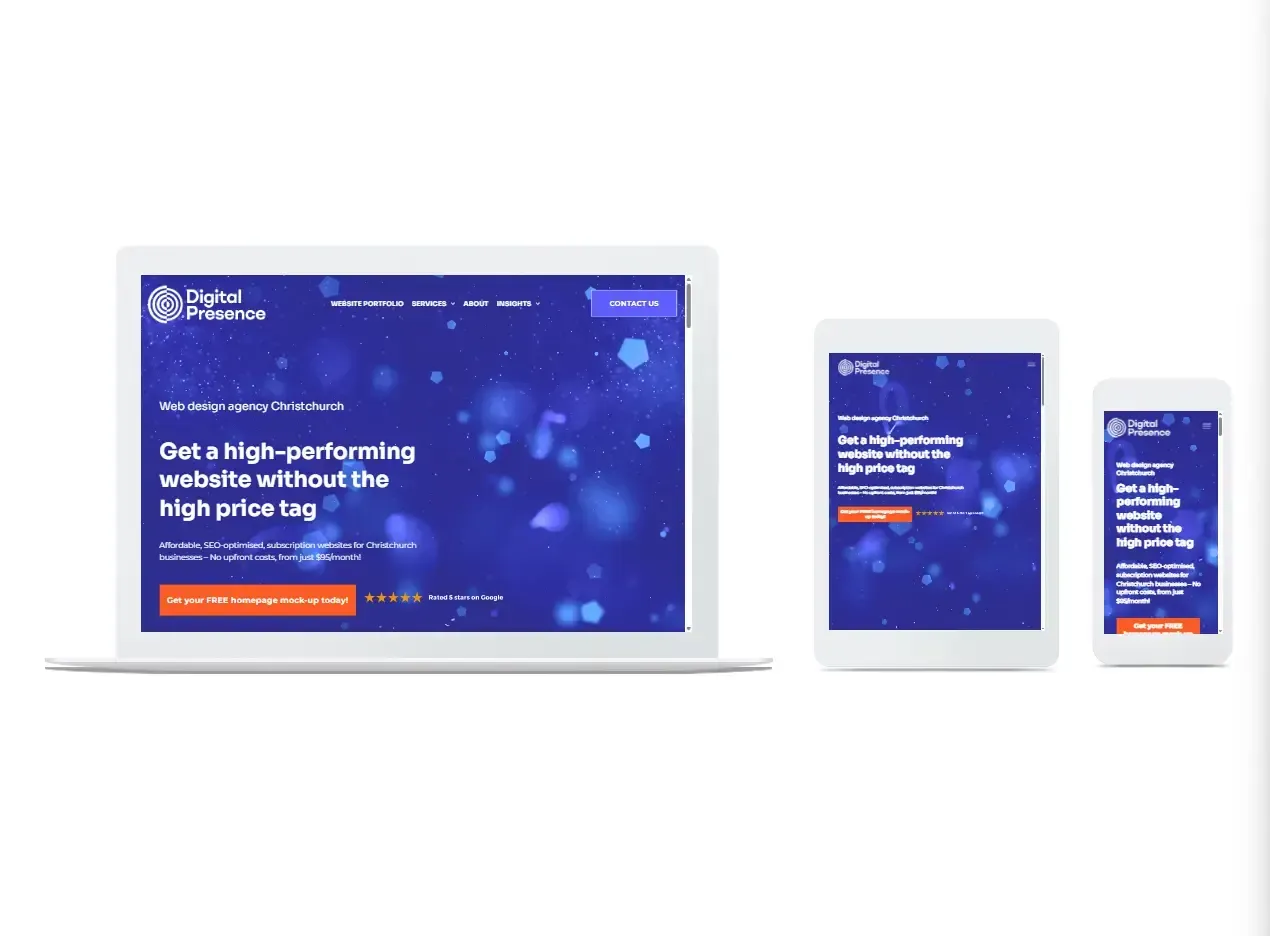A beginner's guide to Google Ads for small and medium business owners
As a small or medium business owner stepping into the vast world of online advertising, the prospect of launching your first Google Ads campaign might seem daunting. Fear not! This guide is designed to demystify Google Ads, providing you with the foundational knowledge needed to begin your advertising journey.
Understanding Google Ads
Google Ads is a robust online advertising platform that enables businesses to display ads across Google's vast network, including search results, websites, videos, and apps. By allowing advertisers to target specific keywords, demographics, and locations, Google Ads ensures that your message reaches the right people at the right time.

The benefits of Google Ads for SMBs
In the bustling digital marketplace, small and medium-sized businesses (SMBs) are constantly seeking strategies to carve out their niche, attract more customers, and drive growth. This is where Google Ads emerges as a beacon of opportunity, offering a plethora of benefits tailor-made for the ambitions and constraints of SMBs. Let's delve deeper into how Google Ads can be the catalyst for transformation your business has been searching for.
Targeted reach: precision at its best
Google Ads stands out for its unparalleled ability to target advertisements with precision. Whether it's targeting by keywords, location, demographics, or even time of day, Google Ads ensures your message reaches the exact audience you're aiming for. For SMBs, this means not just any traffic, but the right traffic — potential customers actively seeking what you offer.
Cost-effective marketing: maximising every dollar
Budget constraints often dictate the marketing strategies of SMBs. Google Ads, with its pay-per-click (PPC) model, ensures you get the most bang for your buck. You only pay when someone clicks on your ad, allowing for efficient budget management and ROI tracking. This level of control and flexibility ensures that even with limited resources, you can achieve significant visibility and results.
Measurable success: analytics that empower
One of the most daunting aspects of marketing for SMBs is measuring success. Google Ads shines here by providing detailed analytics and insights into how your ads are performing. From click-through rates to conversion rates, you have access to data that helps you understand what's working and what's not. This empowers SMBs to make informed decisions, tweak strategies, and continuously optimize their campaigns for better outcomes.

Competitive advantage: levelling the playing field
In a digital era where visibility equates to viability, Google Ads offers SMBs a powerful tool to compete with larger corporations. By strategically using Google Ads, even small businesses can secure a prominent position in search results, gaining the visibility necessary to attract more customers and grow. This democratisation of advertising space is a game-changer, enabling SMBs to stand shoulder to shoulder with their biggest competitors.
Quick results: speedy impact on business growth
Traditional SEO strategies, while effective, can take months to show results. Google Ads, on the other hand, can start driving traffic to your site almost immediately after your campaign goes live. For SMBs looking to quickly boost sales, launch new products, or promote special offers, Google Ads provides a speedy avenue to achieve those goals, making it an invaluable tool in the fast-paced business environment.
Enhanced brand awareness: building your brand's presence
Even when users don't click on your ads, Google Ads serves as an excellent tool for boosting brand awareness. By appearing in search results, your brand name and message get exposed to a broad audience, increasing recognition and credibility over time. For SMBs, this enhanced brand presence in the digital sphere is crucial for long-term growth and customer loyalty.

Setting up your first Google Ads campaign
Embarking on your Google Ads journey begins with creating an account. Once set up, the next step is to clearly define your advertising goals—be it increasing website visits, generating leads, or boosting sales. These goals will guide your campaign strategy and help you measure success.
Exploring different types of Google Ads campaigns
Google Ads offers various campaign types to suit different marketing goals and content formats:
- Search Campaigns: Target users actively searching for products or services like yours.
- Display Campaigns: Reach people while they're browsing websites, apps, or watching videos.
- Video Campaigns: Engage users on YouTube and across the web with video ads.
- Shopping Campaigns: Promote your products directly in Google search results.
- App Campaigns: Drive app installs and engagement.
Selecting the right campaign type depends on your business objectives and where your audience spends their time online.

Keyword research: the heart of your Google Ads campaign
Keyword research is not just a step in your Google Ads campaign; it's the foundation upon which your advertising house is built. It's the process of identifying the words and phrases your potential customers are using to search for products or services like yours. This section will delve into why keyword research is central to your campaign's success and how to approach it with the precision and insight it deserves.
Identifying your digital footprints
Think of keywords as the digital footprints that lead customers to your doorstep. The right keywords ensure you're visible in the moments that matter most—when potential customers are actively seeking what you offer. Begin with brainstorming sessions that consider not just your products, but the problems they solve and the benefits they offer. This broad perspective ensures you capture a wide range of relevant keywords.
Tools of the trade
Leverage tools like Google's Keyword Planner to refine your list, uncovering search volume, competition levels, and even suggestions based on your initial ideas. These tools are invaluable in identifying the keywords that are not only popular but also attainable and highly relevant to your audience.

The long and short of it: mixing keyword types
Your campaign should include a mix of short-tail and long-tail keywords. Short-tail keywords are broader and often more competitive, while long-tail keywords are more specific and can attract highly targeted traffic. Incorporating both types ensures a balanced strategy that captures both volume and relevance.
Intent is everything
Understanding the intent behind searches is crucial. Keywords can have informational, navigational, or transactional intent. Tailoring your keywords and ads to match these intents ensures you meet your audience exactly where they are in their customer journey, increasing the chances of conversion.
A continuous cycle of refinement
Keyword research is not a one-time task but an ongoing process of refinement and optimization. As you gather data on the performance of your keywords, you'll gain insights into what works best for your audience. Continuously analysing and adjusting your keywords based on performance ensures your campaigns remain effective and efficient over time.
Localisation for precision targeting
For local or regional businesses, including location-based keywords can significantly enhance the relevance and effectiveness of your ads. This approach ensures you're capturing the attention of customers in your specific area, making your advertising efforts more focused and impactful.
Keyword research is the compass that guides your Google Ads campaign, ensuring your advertising efforts are aligned with your audience's needs and search behaviours. By dedicating the time and resources to conduct thorough keyword research, you're laying the groundwork for a campaign that not only reaches but resonates with your target customers, driving meaningful engagement and conversions.

Crafting compelling Google Ads
The cornerstone of any successful Google Ads campaign lies in the craft of writing compelling ad copy that resonates with your target audience. This isn't merely about stringing together persuasive words; it's about creating a narrative that aligns with the needs, desires, and motivations of your potential customers. To elevate the effectiveness of your campaigns, your ad copy must be meticulously crafted to not only capture attention but also drive action. Here’s how to refine your approach for maximum impact.
Clarity is key
Start by ensuring your message is crystal clear. Users often scan ads quickly, so your copy needs to communicate the value of your offer succinctly and effectively. Avoid jargon and complex language that might confuse or alienate your audience. Instead, use simple, direct language that speaks directly to how your product or service can solve their problem or improve their life.
Highlight the benefits, not just features
While it's important to mention what your product or service does, it's the benefits that truly resonate with users. Focus on how your offer makes their life easier, better, or more enjoyable. Paint a picture of the positive outcome they can expect by choosing you. For instance, instead of highlighting the technical specifications of a product, explain how those features translate into real-world advantages for the user.
Create a sense of urgency
Incorporating elements of urgency and scarcity in your ad copy can significantly boost click-through rates. Phrases like "limited time offer," "sale ends soon," or "while supplies last" encourage users to act now rather than later. This technique taps into the fear of missing out (FOMO) and can be a powerful motivator in driving immediate action.

Personalise Your Message
Tailor your ad copy to speak directly to your target audience. Use language and references that resonate with their interests and lifestyle. Personalization makes your ad more relatable and can increase the likelihood of engagement. If your Google Ads campaigns target different segments of your audience, customize your ad copy for each segment to reflect their specific needs and desires.
Leverage Emotional Triggers
Emotions play a pivotal role in decision-making. Your ad copy should tap into the emotional triggers that motivate your audience to take action, whether it's the joy of experiencing something new, the comfort of solving a nagging problem, or the satisfaction of getting a great deal. Use emotive language to connect on a deeper level and make your offer irresistible.
Include a Strong Call to Action (CTA)
Your CTA is the bridge between interest and action. It should be compelling, clear, and convey exactly what you want the user to do next. Use action-oriented language that leaves no doubt about the next steps, whether it's "Shop Now," "Sign Up Today," or "Get Your Free Quote." A strong CTA can significantly increase your ad's conversion rate by clearly stating the action you want users to take.
Test and Optimise
Finally, the key to crafting compelling ad copy is continuous testing and optimization. Experiment with different headlines, benefits, and CTAs to see what resonates most with your audience. Use A/B testing to compare the performance of various ad variations and refine your approach based on real data. This iterative process ensures your ad copy remains effective and relevant over time.

Budgeting and Bidding in Google Ads
Navigating the financial aspects of your Google Ads campaign, specifically budgeting and bidding, is akin to steering a ship through the vast ocean of online advertising. This journey requires a keen understanding of how to allocate your resources effectively to ensure not only that your ads reach your target audience but also that every dollar spent works towards achieving your business goals. Here's a deeper dive into mastering budgeting and bidding in Google Ads for optimal campaign performance.
Setting Your Budget: A Strategic Approach
Determining your Google Ads budget involves more than just deciding how much you're willing to spend; it's about strategically investing in your campaign's success. Start by defining your advertising goals and understanding the average cost per click (CPC) in your industry. This foundational step helps in creating a budget that's both realistic and aligned with your expected outcomes. Remember, your budget should be flexible enough to adjust based on campaign performance and business needs.
- Strategic Allocation: Distribute your budget across campaigns based on priority and potential return on investment. High-performing campaigns may warrant a larger share of the budget.
- Daily vs. Monthly Budgeting: Google Ads allows you to set daily budgets for your campaigns, giving you control over spending. Consider your overall monthly advertising budget and divide it by the number of days in the month to establish a daily spend that keeps you on track.

The art of bidding: maximising visibility and value
Bidding in Google Ads is essentially telling Google how much you're willing to pay for specific actions, such as clicks, impressions, or conversions. Your bidding strategy should be tailored to your campaign goals, whether you're focusing on driving traffic, increasing visibility, or generating conversions.
- CPC Bidding: Ideal for campaigns aimed at driving traffic to your website. You pay for each click, making it crucial to balance bid amounts with the quality and relevance of your ads.
- CPM Bidding:
Best suited for campaigns where impressions and brand visibility are the main objectives. You pay per thousand impressions, focusing on the reach rather than the direct action.
- CPA Bidding: Conversion-focused campaigns benefit from cost-per-acquisition (CPA) bidding, where you pay for actions like sales or sign-ups. This strategy requires a clear understanding of your conversion value and the ability to track conversions accurately.
Leveraging bid adjustments for enhanced control
Bid adjustments allow you to increase or decrease your bids based on various factors, such as device, location, and time of day, providing an additional layer of strategy to your bidding. Use these adjustments to capitalize on high-performing segments of your audience or to pull back on areas that are not meeting your goals.
Embracing automation for efficiency
Google Ads offers automated bidding strategies that leverage machine learning to optimize your bids in real-time, based on the likelihood of achieving your specified goals. While automation can offer significant advantages in terms of efficiency and performance, it's important to monitor these strategies closely to ensure they align with your overall campaign objectives.
Continuous monitoring and adjustment: key to success
Both budgeting and bidding are not set-and-forget elements of your Google Ads campaign. They require continuous monitoring, analysis, and adjustment to respond to campaign performance, market changes, and business objectives. Regularly reviewing your budget and bidding strategies ensures that your Google Ads campaign remains both effective and efficient, maximizing ROI and driving success.

Common pitfalls to avoid
When embarking on your Google Ads journey, awareness of common pitfalls can significantly enhance the effectiveness of your campaigns. Steering clear of these missteps not only optimizes your budget but also ensures your ads resonate with your target audience and achieve your desired objectives. Let’s highlight a few critical mistakes to avoid and how to navigate around them for a smoother Google Ads experience.
Overlooking negative keywords
Neglecting to use negative keywords is a common oversight that can dilute the relevance of your campaigns. Negative keywords prevent your ads from appearing in response to certain search queries, ensuring your ad spend is focused on keywords that are truly relevant to your offerings. Regularly updating your list of negative keywords helps refine your targeting and improve campaign ROI.
Ignoring match types
Failing to understand and utilize keyword match types effectively can lead to missed opportunities and wasted ad spend. Each match type (broad, phrase, exact) offers different levels of control over who sees your ad based on their search query. Balancing reach and relevance by strategically using match types can significantly enhance campaign performance.
Disregarding mobile optimisation
In today's mobile-first world, not optimising your ads and landing pages for mobile devices can significantly hinder your campaign's success. Mobile optimisation ensures a seamless experience for users on smartphones and tablets, crucial for maintaining engagement and driving conversions. Include mobile-friendly designs and consider mobile-specific ad copy to cater to this significant segment of your audience.

Underestimating the importance of landing pages
Directing your ads to generic pages or, worse, your homepage, can lead to high bounce rates and low conversion rates. Your landing page should match the promise of your ad, providing a cohesive experience that encourages users to take the next step. Ensure your landing pages are optimized for conversions with clear CTAs and relevant, engaging content.
Not utilising conversion tracking
Without setting up conversion tracking, you're flying blind in terms of understanding the effectiveness of your Google Ads campaigns. Conversion tracking allows you to see which ads and keywords are driving valuable customer actions, such as purchases, sign-ups, or leads. This data is crucial for optimizing your campaigns and allocating your budget more effectively.
Embarking on your Google Ads adventure represents a pivotal step towards amplifying your small or medium business's online presence and driving sales to new heights. With a solid grasp of the basics, a strategic approach to planning your campaigns, and a commitment to continuous optimization based on performance data, you're not just participating in digital marketing—you're mastering it.
Google Ads is a powerful tool, but its complexity and the dynamic nature of digital advertising mean that navigating it successfully requires insight, expertise, and a keen eye for detail. That's where Digital Presence comes in. Our team of Google Ads specialists is dedicated to crafting campaigns that not only meet but exceed your expectations. We understand the unique challenges and opportunities that small and medium businesses face online, and we're here to ensure that your Google Ads campaigns are perfectly aligned with your business goals, target audience, and budget. Reach out and get a no obligation quote.












